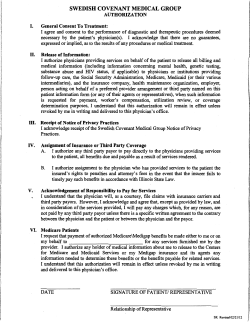
2015 SGO Fact Sheet: Physician Value
Physician Value-Based Payment Modifier The Physician Value-Based Payment Modifier (PVBM), mandated by the Affordable Care Act, seeks to financially reward physicians who provide health care that is high value-both high in quality and low in cost.i The PVBM reward formula is a system in which performance is assessed in two dimensions (quality and cost), with payments accruing to physicians who have above-average performance along both dimensions. Physicians who perform worse than average or choose not to be involved will be paid less; physicians with average performance will experience no change. Based on the 2013 data year, the maximum bonus is ~2% of Medicare fees and the maximum penalty is ~1%.i In January 2015, Medicare will begin applying the PVBM to physician payments under the Medicare Physician Fee schedule for physicians in groups of 100 or more eligible professionals (under the same TIN number) based on their performance in calendar year 2013. Physicians in group practices of 10 or more eligible professionals (under the same TIN number) who participate in Fee-For- Service Medicare (excludes Medicare Advantage) will be subject to the value modifier in 2016, based on their performance in calendar year 2014. For 2017, based in 2015 reported quality measures and costs, all eligible professionals will be subjected to the PVBM. Practice of nine or less eligible professionals will be at risk for +/- 2% and practices with 10 or greater eligible professionals will be at risk for +/- 4 % What quality and cost measures will Medicare use in determining the VBM? CMS will use the Physician Quality Reporting System (PQRS) quality measures reported by individual physicians and by groups under that program’s reporting mechanism of which there are several options. Total per capita costs for Medicare beneficiaries (adjusted by specialty) will be used to calculate a cost composite score for the value-based payment modifier. What does this mean for SGO Members? i Given that Medicare is a budget-neutral program, there will inevitably be winners and losers; Rules and calculations based on cost profiles and quality seem complex and not easy to understand which may lead to less revenue for physicians, cost pressures and the need to see more patients; therefore, decreasing time spent with patients; Physicians with <10 years of experience have 13.2% higher cost profiles than physicians who have been practicing >40 yearsii which may lead to decreased access to new physicians; and May force physicians to modify their practice patterns. Chien AT, Rosenthal MB. Medicare’s Physician Value-Based Payment Modifier-Will the Tectonic Shift Create Waves? N Engl J Med. 2013;369:2076-2078 ii Mehrotra A, Reid RO, Adams JL, Friedberg MW, McGlynn EA, Hussey PS. Physicians With The Least Experience Have Higher Cost Profiles Than Do Physicians With The Most Experience. Health Affairs. 2012;31:2453-2463.
© Copyright 2025





















